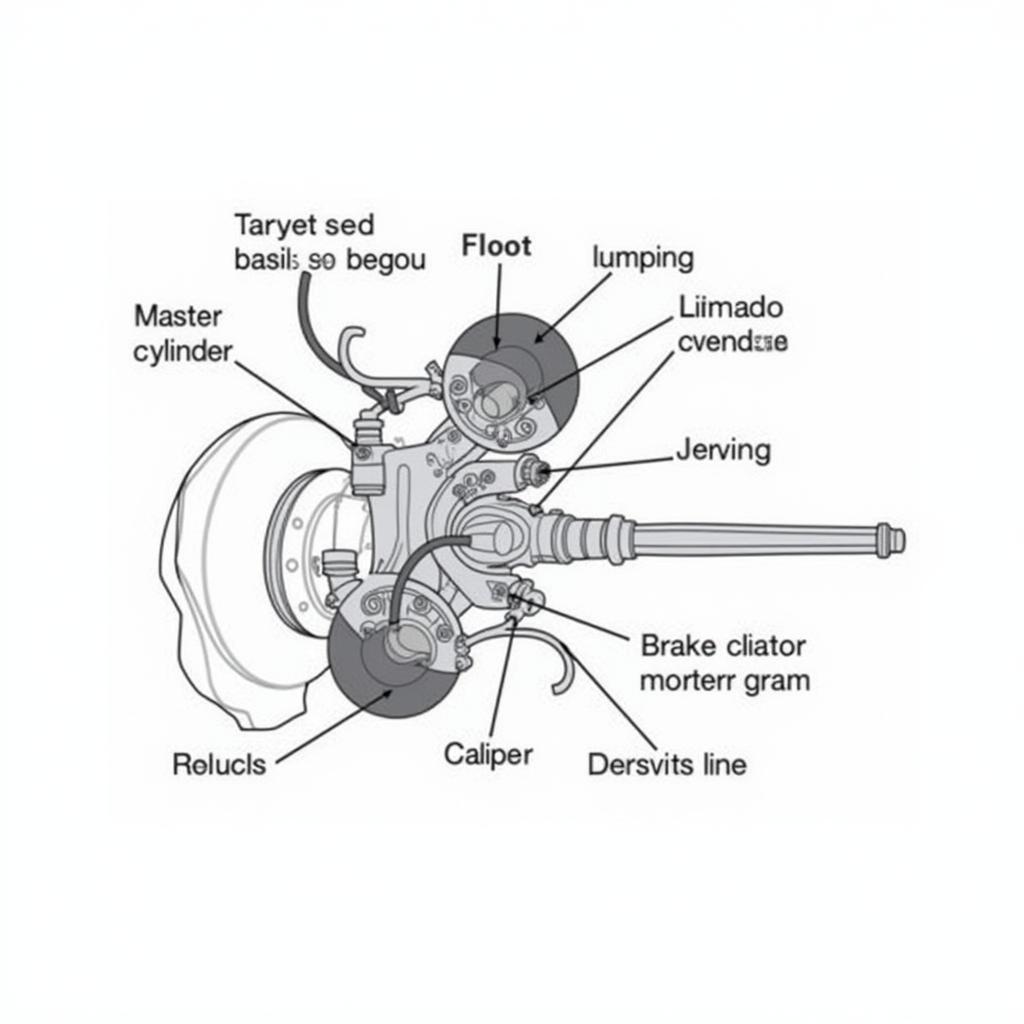Seeing the brake warning light illuminated on your Mercedes E Class dashboard can be unnerving. It signals a potential problem within your braking system that needs immediate attention. While it might seem alarming, understanding the common causes can help you address the issue efficiently. This article explores the potential reasons behind a Mercedes E Class brake warning light and guides you toward the right solutions.
Understanding Your Mercedes E Class Brake Warning Light
The brake warning light, typically a red circle with an exclamation mark or the word “BRAKE,” serves as a crucial safety indicator. It can illuminate for several reasons, some more serious than others.
Common Causes of a Mercedes E Class Brake Warning Light
Several factors can trigger the brake warning light in your E Class. Let’s delve into the most common culprits:
- Worn Brake Pads: This is the most frequent reason for the warning light. Mercedes E Class vehicles are equipped with brake pad wear sensors. When the pads wear down to a certain level, the sensor triggers the warning light, indicating it’s time for a replacement.
- Low Brake Fluid Level: Brake fluid is the lifeblood of your car’s braking system. A drop in brake fluid level often points towards a leak in the system, which can severely compromise your ability to stop safely.
- Faulty Brake Light Switch: The brake light switch activates your brake lights when you press the pedal. A malfunctioning switch can disrupt this signal, leading to the brake warning light illuminating.
- ABS Sensor Issues: The Anti-lock Braking System (ABS) is crucial for preventing wheel lock-up during braking. A faulty ABS sensor can disrupt this system, triggering the warning light.
- Master Cylinder Problems: The master cylinder plays a vital role in converting brake pedal pressure into hydraulic pressure. A failing master cylinder can lead to brake failure and trigger the warning light.
- Parking Brake Engaged: While seemingly obvious, sometimes the simplest answer is the right one. Make sure your parking brake is fully disengaged, as a partially engaged brake can trigger the warning light.
Troubleshooting Your Mercedes E Class Brake Warning Light
While diagnosing the exact cause requires professional expertise, some initial troubleshooting steps can help:
- Check Your Brake Fluid: Locate the brake fluid reservoir under the hood (refer to your owner’s manual). Ensure the fluid level falls between the minimum and maximum marks.
- Inspect Your Brake Lights: Have a friend or family member press the brake pedal while you check if all brake lights are functioning correctly.
- Examine Your Parking Brake: Ensure your parking brake is fully disengaged and not stuck in the applied position.
When to Seek Professional Help
If the brake warning light persists after performing the basic checks, it’s crucial to seek professional assistance immediately. Driving with a compromised braking system can be extremely dangerous.
A qualified mechanic specializing in Mercedes vehicles can accurately diagnose the problem using specialized diagnostic tools. They can identify the faulty component, whether it’s worn brake pads, a malfunctioning sensor, or a leak in the brake line.
Preventing Future Brake Warning Lights
Prevention is always better than cure. Regular maintenance can help you avoid unexpected brake issues and keep your Mercedes E Class running smoothly.
- Regular Brake Inspections: Adhere to the recommended brake inspection intervals mentioned in your owner’s manual. Regular checks can help detect and address potential problems before they escalate.
- Timely Brake Pad Replacement: Don’t ignore the brake wear indicator. Replace your brake pads as soon as the warning light illuminates to avoid further damage to the braking system.
- Maintain Proper Brake Fluid Levels: Check your brake fluid level regularly and top it up if needed. If you notice frequent drops in the fluid level, it indicates a leak that requires immediate professional attention.
Mercedes E Class Brake Warning Light FAQs
Q: Can I drive my Mercedes E Class with the brake warning light on?
A: It’s highly discouraged. Driving with a potential brake problem can be extremely risky. Seek professional help immediately.
Q: How much does it cost to fix a Mercedes E Class brake warning light issue?
A: The cost varies significantly depending on the underlying cause. A simple brake pad replacement will be less expensive than repairing a brake line leak or replacing a faulty ABS sensor.
Q: How often should I replace my Mercedes E Class brake pads?
A: Brake pad lifespan varies based on driving conditions and habits. However, it’s generally recommended to have them checked every 10,000-12,000 miles and replaced as needed.
Q: What should I do if my Mercedes E Class brake pedal feels spongy?
A: A spongy brake pedal often indicates air in the brake lines or a serious brake fluid leak. It requires immediate professional attention.
Q: How can I prevent my Mercedes E Class brake warning light from coming on?
A: Adhering to a regular maintenance schedule, including brake inspections and timely replacement of worn components, can significantly reduce the chances of unexpected brake warning lights.
Conclusion
Addressing a Mercedes E Class brake warning light promptly is vital for ensuring your safety and preventing further damage to your vehicle. While some initial troubleshooting can help, seeking professional diagnosis and repair from a qualified Mercedes mechanic is always recommended for a safe and reliable driving experience.

